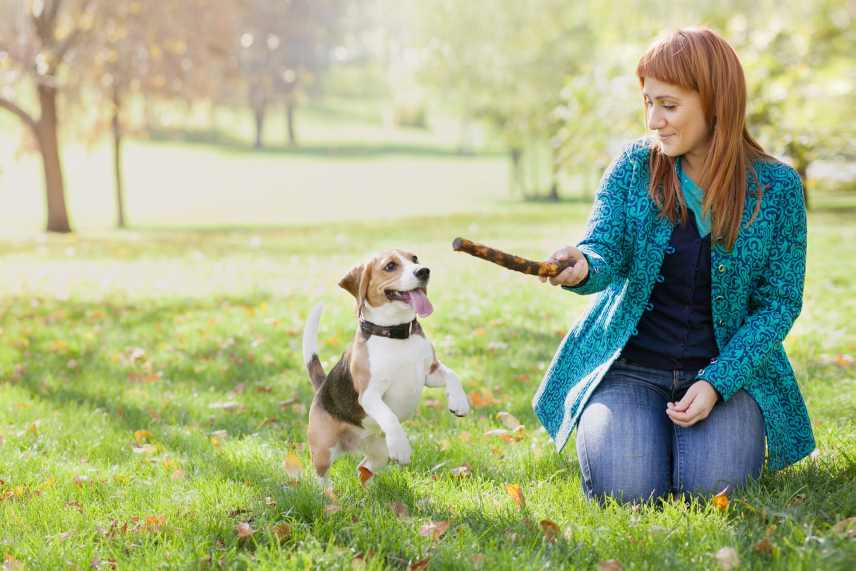Dog training has evolved significantly over the years, with various methods and techniques emerging to help shape canine behavior. One particularly effective approach is operant conditioning, a psychological concept that has revolutionized the field of animal training. Operant conditioning in dog training involves reinforcing desired behaviors and discouraging unwanted ones through a system of rewards and consequences.
This method, pioneered by psychologist B.F. Skinner, has proven highly effective in teaching dogs new skills and modifying their behavior. By understanding the principles of operant conditioning, dog owners and trainers can create structured, positive learning experiences for their canine companions. This approach not only enhances the dog’s ability to learn but also strengthens the bond between the animal and its human counterpart.
Key Takeaways
- Operant conditioning reinforces desired behaviors through rewards and consequences
- This method enhances learning and strengthens the human-canine bond
- Operant conditioning can be applied to teach various skills and modify behaviors

As we explore the application of operant conditioning in dog training, we’ll uncover the science behind this powerful technique and how it can be used to achieve remarkable results. From basic obedience commands to complex behavioral modifications, operant conditioning offers a versatile toolkit for shaping canine behavior in a humane and effective manner.
Fundamentals of Operant Conditioning
Operant conditioning forms the backbone of modern dog training methods. This scientific approach focuses on using consequences to shape behavior, drawing from principles established through rigorous research and practical application.
Definition and Principles
Operant conditioning is a learning process where behaviors are modified through their consequences. In dog training, it involves reinforcing desired behaviors and discouraging unwanted ones. The core principle is that behaviors followed by positive outcomes are more likely to be repeated, while those followed by negative outcomes are less likely to recur.
This method relies on timing and consistency. Trainers must deliver consequences immediately after a behavior occurs for maximum effectiveness. Consistency in applying these principles helps dogs learn faster and retain behaviors longer.
Historical Background
B.F. Skinner, a renowned psychologist, developed operant conditioning in the mid-20th century. His research with rats and pigeons demonstrated how behaviors could be shaped through systematic reinforcement.
Skinner’s work built upon earlier studies by Edward Thorndike, who formulated the Law of Effect. This law states that responses followed by satisfying consequences are strengthened, while those followed by unpleasant consequences are weakened.
The application of operant conditioning to dog training gained popularity in the 1980s and 1990s. It offered a more humane and effective alternative to traditional punishment-based methods.
The Four Quadrants of Operant Conditioning
- Positive Reinforcement: Adding a pleasant stimulus to increase behavior.
- Negative Reinforcement: Removing an unpleasant stimulus to increase behavior.
- Positive Punishment: Adding an unpleasant stimulus to decrease behavior.
- Negative Punishment: Removing a pleasant stimulus to decrease behavior.
Positive reinforcement is the most widely used quadrant in modern dog training. It involves rewarding desired behaviors with treats, praise, or play. This method is effective and strengthens the bond between dog and trainer.
Negative reinforcement and punishment are used less frequently due to potential negative side effects. These methods can cause stress or fear if not applied correctly.
Application of Operant Conditioning in Dog Training
Operant conditioning forms the foundation of effective dog training techniques. It utilizes rewards and consequences to shape canine behavior, creating reliable responses to commands and cues.
Positive Reinforcement Training
Positive reinforcement is a cornerstone of modern dog training. Trainers reward desired behaviors with treats, praise, or toys. This method encourages dogs to repeat actions that lead to pleasant outcomes.
Clicker training is a popular form of positive reinforcement. Trainers use a small device that makes a clicking sound to mark the exact moment a dog performs correctly. The click is followed by a reward, creating a clear association between action and consequence.
Consistency is key in positive reinforcement. Trainers must reward desired behaviors promptly and frequently during the learning phase. As the dog becomes more proficient, rewards can be given intermittently to maintain the behavior.
Negative Reinforcement and Punishment
Negative reinforcement involves removing an unpleasant stimulus when the dog performs the desired behavior. For example, pressure on a leash is released when the dog stops pulling.
Positive punishment adds an aversive stimulus to discourage unwanted behavior. This might include a verbal correction or a quick tug on the leash. Negative punishment removes something desirable to decrease unwanted behavior, such as withholding attention when a dog jumps up.
These methods can be effective but require careful application. Improper use may lead to confusion or fear in dogs. Many trainers prefer to focus on positive reinforcement techniques when possible.
Differences Between Operant and Classical Conditioning
Operant conditioning focuses on voluntary behaviors and their consequences. Dogs learn to perform actions that lead to rewards or avoid those that result in unpleasant outcomes.
Classical conditioning, in contrast, deals with involuntary responses to stimuli. It’s often used in combination with operant conditioning to create associations between cues and behaviors.
For example, a trainer might use a clicker (operant conditioning) to mark a desired behavior, while simultaneously building positive associations with the sound of the clicker (classical conditioning).
Understanding both types of conditioning allows trainers to develop comprehensive training programs that address various aspects of canine learning and behavior.
Ethical Considerations in Training Techniques
Ethical dog training prioritizes the well-being and mental health of the animal. Trainers must consider the long-term effects of their methods on the dog’s behavior and emotional state.
Positive reinforcement techniques are generally considered the most ethical approach. They build trust between dog and handler while avoiding potential negative consequences of punishment-based methods.
The use of aversive stimuli in training is controversial. Critics argue that such methods can cause stress, fear, and aggression in dogs. Proponents maintain that when used correctly, these techniques can be effective and humane.
Trainers must stay informed about current research in animal behavior and welfare. This knowledge helps them make ethical choices in their training approaches and adapt techniques to suit individual dogs’ needs.
Designing a Dog Training Program
Effective dog training programs incorporate behavior assessment, goal-setting, rewards, play, and anxiety management. A well-structured approach tailored to each dog’s needs yields the best results.
Assessing Behavior and Setting Goals
Begin by observing the dog’s current behavior patterns. Note strengths, weaknesses, and any problematic actions. Identify specific behaviors to target for improvement or elimination. Set clear, achievable goals based on this assessment.
Create a list of desired behaviors, such as:
- Responding to basic commands (sit, stay, come)
- Walking calmly on a leash
- Greeting people politely
- Avoiding destructive chewing
Prioritize these goals based on importance and difficulty. Start with simpler tasks to build confidence and progress to more complex behaviors.
Creating a Reward System
Develop a consistent reward system to reinforce positive behaviors. Use a combination of treats, praise, and toys as rewards. Choose high-value treats for more challenging tasks.
Timing is crucial. Deliver rewards immediately after the desired behavior occurs. This helps the dog associate the action with the positive outcome.
Gradually reduce treat frequency as behaviors become ingrained. Replace edible rewards with verbal praise and physical affection. This transition helps maintain good behavior without relying solely on food rewards.
Incorporating Play and Obedience
Integrate training sessions into playtime to make learning enjoyable. Use favorite toys as rewards for following commands. This approach keeps the dog engaged and motivated.
Teach obedience commands during short, frequent sessions throughout the day. Start with basic commands like “sit” and “stay” before progressing to more advanced skills.
Practice commands in various locations and with different distractions. This helps the dog generalize learned behaviors to different environments.
Avoiding and Addressing Anxiety
Create a calm training environment to minimize anxiety. Start in quiet areas with few distractions. Gradually introduce more challenging settings as the dog’s confidence grows.
Watch for signs of stress or anxiety during training sessions. These may include:
- Excessive panting
- Tucked tail
- Pinned back ears
- Avoidance behaviors
If anxiety occurs, take a break or return to an easier task. Use positive reinforcement to build confidence in stressful situations. Consider shorter, more frequent training sessions for anxious dogs.
Advanced Training Concepts
Advanced dog training builds upon basic operant conditioning principles to shape more complex behaviors. Trainers employ sophisticated techniques to achieve refined results, with a focus on precision and consistency.
Training for Complex Commands
Complex commands require breaking behaviors into smaller steps. Trainers use chaining to link these steps together. For example, teaching a dog to fetch a specific item involves recognizing the object, retrieving it, and returning it to the handler.
Shaping is another crucial technique. Trainers reward successive approximations of the desired behavior. This gradual process allows dogs to learn intricate tasks like opening doors or turning off lights.
Trainers also utilize cue discrimination to teach dogs to respond differently to similar commands. This skill enables dogs to distinguish between “sit” and “down” or to perform actions based on subtle hand signals.
Consistency and Timing in Reinforcement
Precise timing is critical in advanced training. Rewards must be delivered within seconds of the desired behavior to create a clear association. Clickers or marker words help bridge this gap, signaling the exact moment of success.
Consistency in cues and rewards maintains clarity for the dog. Trainers use the same words, hand signals, and reinforcement schedules to prevent confusion. Variable reinforcement schedules strengthen behaviors once they are established, making them more resistant to extinction.
Trainers also focus on generalizing behaviors across different environments and distractions. This ensures the dog responds reliably in various situations, not just in familiar training settings.
Role of Aversive Stimuli in Training
Aversive stimuli in dog training remain a topic of debate. Some trainers use mild aversives like leash corrections or verbal interruptions to discourage unwanted behaviors. These methods aim to create negative associations with specific actions.
Positive punishment involves adding an unpleasant stimulus to reduce behavior frequency. Negative reinforcement removes an aversive stimulus when the desired behavior occurs. Both techniques can be effective but require careful application to avoid stress or fear responses in dogs.
Many modern trainers prefer force-free methods, focusing on positive reinforcement and management strategies. This approach aims to build a strong bond between dog and handler while minimizing potential negative psychological impacts.
Impact of Operant Conditioning on the Owner-Dog Relationship
Operant conditioning in dog training significantly influences the bond between owners and their canine companions. This approach fosters clear communication and mutual understanding.
Positive reinforcement training, a key component of operant conditioning, strengthens the owner-dog relationship. Dogs learn to associate their owners with rewards and pleasant experiences, enhancing trust and cooperation.
Consistency in applying operant conditioning principles helps dogs understand expectations. This clarity reduces stress and confusion, leading to a more harmonious household.
The training process itself becomes a bonding activity. Owners and dogs spend quality time together, working towards common goals and celebrating achievements.
Operant conditioning techniques empower owners to effectively guide their dogs’ behavior. This sense of control often leads to increased confidence in managing various situations.
Dogs trained using these methods typically display more enthusiasm for learning. Their eagerness to please and engage with their owners contributes to a more interactive relationship.
The positive approach of operant conditioning minimizes conflict and punishment. This creates a safe, supportive environment for both dogs and owners to thrive in their shared experiences.
Case Studies and Research
Scientific studies have examined the efficacy of operant conditioning in dog training. Research highlights the importance of timing, consistency, and reinforcement type in shaping canine behavior.
Analysis of Different Training Methods
A 2019 study compared positive reinforcement, negative reinforcement, and punishment-based methods. The research involved 100 dogs of various breeds and ages. Positive reinforcement showed the highest success rate, with 87% of dogs learning new behaviors within two weeks.
Negative reinforcement had mixed results, with 62% of dogs responding well but 38% showing signs of stress. Punishment-based methods were least effective, with only 43% of dogs learning the desired behaviors and 28% developing fear responses.
The study emphasized the importance of proper technique. Trainers using positive reinforcement achieved better results when rewards were given within 1-2 seconds of the desired behavior.
Effectiveness of Positive Reinforcement
A long-term study tracked 250 dogs over three years to assess the lasting impact of positive reinforcement training. Results showed that 93% of dogs maintained learned behaviors after one year, compared to 61% for other methods.
The research found that food rewards were most effective for initial training, while praise and play became equally reinforcing over time. Dogs trained with positive methods showed increased confidence and problem-solving abilities.
A notable finding was the reduction in problem behaviors. Positively trained dogs exhibited 72% fewer instances of aggression, anxiety, and excessive barking compared to the control group.
Conclusion
Operant conditioning stands as a powerful tool in dog training. This scientifically-backed approach shapes canine behavior through positive and negative reinforcement.
Dog owners who embrace these techniques often see significant improvements in their pets’ conduct. The learning process becomes more efficient and enjoyable for both dogs and their human companions.
Consistency proves crucial in applying operant conditioning principles. Trainers must maintain clear communication and timing to effectively reinforce desired behaviors.
While the training journey may require patience, the results can be transformative. Well-trained dogs exhibit better manners, increased obedience, and stronger bonds with their owners.
As research in animal behavior advances, operant conditioning continues to evolve. New insights refine training methods, making them more effective and humane.
Ultimately, this approach empowers dog owners to create harmonious relationships with their furry friends. By understanding and applying operant conditioning, they can foster well-behaved, happy canine companions.
Frequently Asked Questions
Operant conditioning plays a crucial role in dog training. Many pet owners have questions about its application and effectiveness.
What is the difference between operant and classical conditioning in dog training?
Operant conditioning involves learning through consequences. Dogs associate their behaviors with rewards or punishments. Classical conditioning pairs a neutral stimulus with a natural response. It creates automatic reactions to certain triggers.
How does positive reinforcement work in the context of operant conditioning when training dogs?
Positive reinforcement adds something pleasant after a desired behavior. Treats, praise, or toys reward good actions. This increases the likelihood of the dog repeating that behavior in the future.
Can you provide examples of operant conditioning techniques for dog training?
Clicker training uses a sound to mark desired behaviors. Leash corrections discourage pulling. Time-outs remove attention for unwanted actions. Treat rewards encourage sitting or staying on command.
What are the most effective operant conditioning methods for teaching dogs new tricks?
Shaping breaks complex behaviors into small steps. Luring guides dogs with treats. Capturing rewards spontaneous desired actions. Chaining links multiple behaviors together.
How does operant counter conditioning alter a dog’s behavior?
Counter conditioning changes a dog’s emotional response. It pairs a feared stimulus with positive experiences. For example, giving treats during thunderstorms can reduce anxiety over time.
What distinguishes correction-based training from positive reinforcement in dog obedience programs?
Correction-based training uses punishments to stop unwanted behaviors. Positive reinforcement focuses on rewarding desired actions. Correction methods may include leash jerks or verbal reprimands. Positive techniques emphasize treats, praise, and play.
How to Teach a Dog to Lie Down: A Step-by-Step Guide for Effective Training

Training a dog to lie down requires patience and practice. Encouragement with treats and praise reinforces good behavior, allowing the dog to associate the command with positive outcomes. With the right techniques, even the most energetic dog can master this skill. The steps to successfully teach this command are straightforward, making it accessible for all dog owners
Continue reading: How to Teach a Dog to Lie Down
Free Online Dog Obedience Training: Top Resources for Training Your Canine at Home

One of the biggest advantages of free online dog obedience training is the ability to learn at your own pace. Unlike traditional dog training classes, which may have set schedules and agendas, online training allows dog owners to work with their dogs on their own time. This can be especially helpful for busy dog owners who may not have the time or flexibility to attend regular training classes.
Continue reading: Free Online Dog Obedience Training

